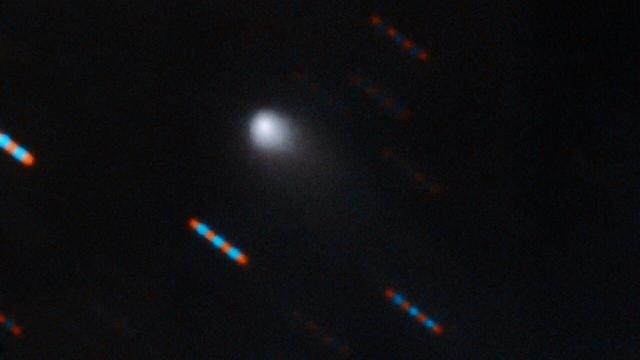The second known interstellar visitor to our solar system has been named 2I/Borisov, in honour of the amateur astronomer who first detected the rare object.
Gennady Borisov detected the interstellar comet on August 30, 2019 using his custom-built 0.65-metre telescope in Crimea. In the days that followed, other observatories carefully tracked the object to confirm its nature and identity.
The resulting data, according to the International Astronomical Union (ASU), allowed the IAU Minor Planet Centre to calculate its unusual trajectory and confirm it as being only the second known object to visit us from another star system, the first being 1I/‘Oumuamua.
“The orbit is now sufficiently well known, and the object is unambiguously interstellar in origin; it has received its final designation as the second interstellar object, 2I,” declared the IAU in a press release issued today. “In this case, the IAU has decided to follow the tradition of naming cometary objects after their discoverers, so the object has been named 2I/Borisov.”
So kudos and congratulations to Mr. Borisov, who’s now in the possession of some very serious bragging rights. The object was formerly known as C/2019 Q4.
As for the prefix “2I,” that simply means it’s the second interstellar object to be catalogued, whereas 1I/‘Oumuamua was the first. The next one will be called 3I/[discover’s name], and so on.
That multiple celestial bodies are now owners of this interstellar designation is pretty damned cool, though it’s not immediately obvious why two interstellar objects have been detected in the past two years, whereas none were detected prior. That said, there’s an expectation now among astronomers that more interstellar objects await discovery.
Of the thousands of comets known to astronomers, none feature a hyperbolic orbit as extreme as 2I/Borisov, as confirmed by the NASA JPL Solar System Dynamics Group, according to the IAU. By hyperbolic, astronomers are referring to trajectories in which objects have enough speed and momentum to escape the Sun’s gravitational pull. In this case, 2I/Borisov will make its closest approach to the Sun (perihelion) on December 7, 2019, after which time it will make its way back into interstellar space, never to return again.
2I/Borisov’s perihelion will take it to within 2 AU of the Sun, with 1 AU being the average distance from Earth to the Sun. The interstellar comet will not come any closer than 2 AU to the Earth, according to the IAU.
Given the relatively short time frame, astronomers will certainly want to track and study 2I/Borisov before it recedes from view. Observations of this rare object could tell us more about other star systems, and possibly even our own.
